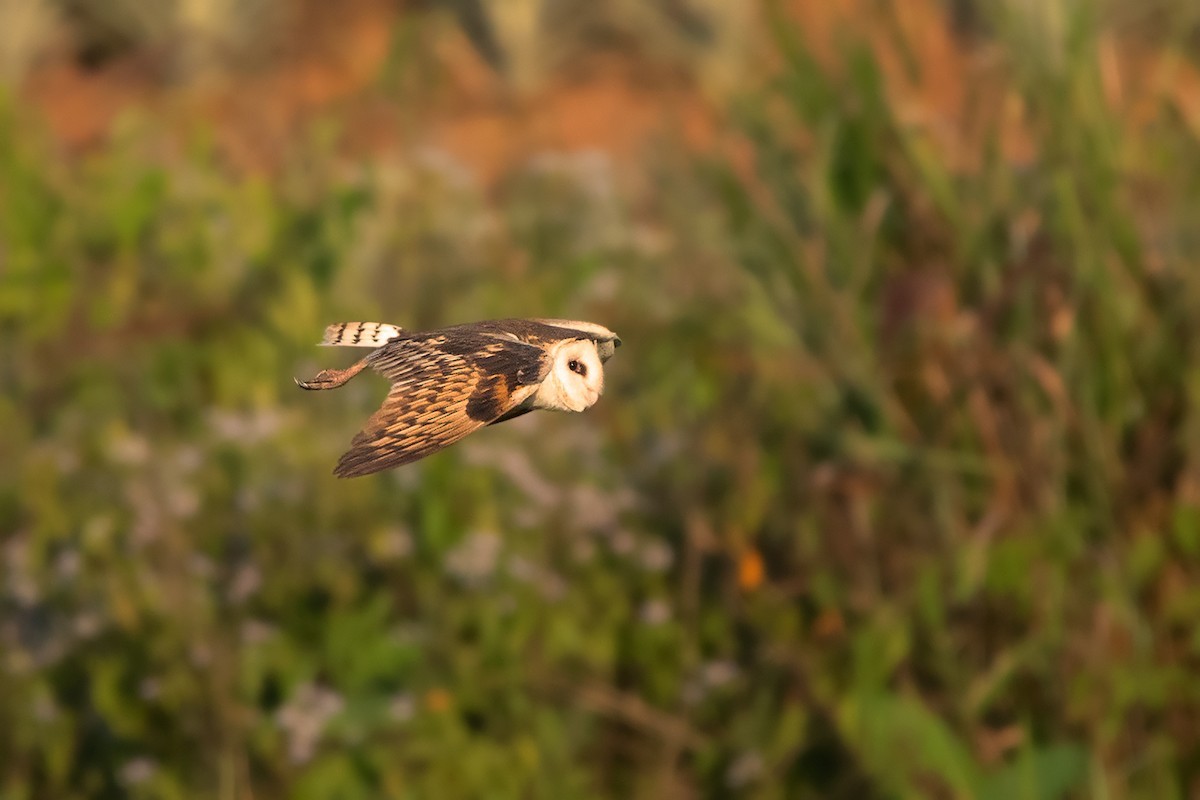Eastern Grass Owl
A species of Tyto Scientific name : Tyto longimembris Genus : Tyto
Eastern Grass Owl, A species of Tyto
Botanical name: Tyto longimembris
Genus: Tyto
Content
Description General Info
 Photo By Ayuwat Jearwattanakanok
Photo By Ayuwat Jearwattanakanok Description
The eastern grass owl is a medium-sized owl, similar in size to the barn owl. Adult males measure from 32 to 38 cm (13 to 15 in) in length, while the larger females can measure from 35 to 42 cm (14 to 17 in). The wingspan is from 100 to 116 cm (39 to 46 in). The female weighs 460 g (16 oz) while the male weighs 400 g (14 oz). They have dark brown or tan upper parts with pale spots. They have black and tan bars on its wings and a very pale beak, feathered legs, and dark brown eyes. Like all Tyto owls, it has a heart-shaped facial disk with brown buff and a white bordering. 
Size
32 - 38 cm
Nest Placement
Cavity
Feeding Habits
Eastern Grass Owl predominantly preys on rodents and occasionally consumes small marsupials, ground birds, reptiles, frogs, and large insects. Eastern Grass Owl hunts with a distinctive low flight, resembling harriers, diving into grass for prey. Feeding activity peaks during twilight and can extend to mid-morning, particularly during prey population surges.
Habitat
Eastern Grass Owl predominantly occupies expansive grasslands, tall grass jungles, and paperbark savannas. Their habitat is characterized by the presence of marshes, floodplains, and heathlands up to mid-mountain altitudes of 2500 meters. The species thrives in undisturbed natural settings but can also adapt to managed environments like agricultural lands. Roosting occurs within dense grass or swamp vegetation.
Dite type
Carnivorous
General Info
Feeding Habits
Bird food type
Distribution Area
Eastern grass owls live in eastern, southern and southeast Asia, parts of New Guinea, Australia (mainly in Queensland) and the western Pacific. It has also been found in the coastal islands. 
Species Status
Eastern grass owls are considered "least concern" globally, primarily because of their wide distribution. Within Australia, Tyto longimembris is considered vulnerable on the New South Wales Threatened Species Conservation Act (1995). 